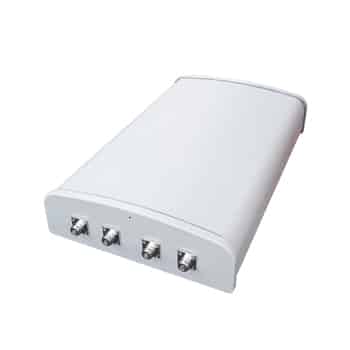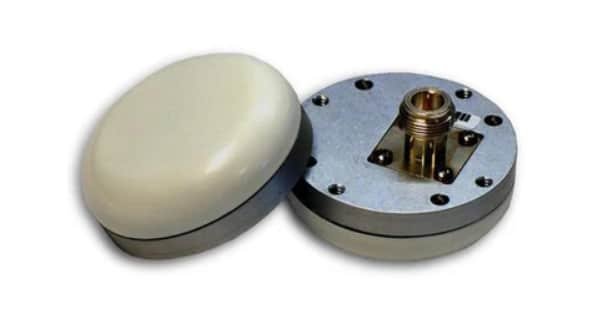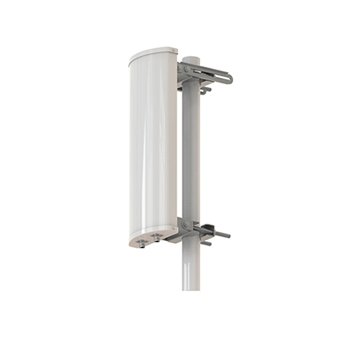Antennas can be considered as the most essential component of modern-day communication systems allowing electromagnetic waves transmission and reception over long distances or nearby. Antennas are available in different shapes and configurations to suit different applications such as horn antennas, parabolic antennas, yagi antennas, panel antennas, helical antennas, etc. This article aims to provide a thorough understanding of panel antennas and yagi antennas and how they compare against each other.
Table of Contents
ToggleOverview of Antennas
In simple terms, an antenna is a device used for receiving or transmitting signals by converting electric power into electromagnetic waves and vice versa, thus enabling communication. Antennas are the linking device between a transmitter and the free space or the free space and a receiver in a communication system. The quality of the communication system, particularly wireless communication will rely heavily on the quality and performance of the antenna. There are certain parameters of an antenna such as the working frequency range, gain, directivity, polarity, etc. that will determine the performance of the antenna. Antennas are classified into different types based on their physical structure, radiation patterns, operating frequencies, etc. A few of the most common types of antennas are described briefly below.
Log periodic antenna: A type of multi-element, directional narrow beam antenna that works on a wide range of frequencies. These antennas are typically used for applications where variable bandwidth is required along with antenna gain and directivity.
Wire antennas: One of the simplest types of antennas that use conductive wires to transmit and receive radio signals. These can be either dipole or monopole antennas. These are used in a wide range of applications such as broadcasting, wireless communication, and radio applications or mounted on vehicles, ships, buildings, etc.
Aperture antennas: This type of antenna has one or more slots cut on the surface to admit signals. These are typically used in microwave frequencies and can be used for applications like satellites, aircraft, and spacecraft.
Reflector antennas: These can be either parabolic antennas or corner antennas that use a curved reflective surface to concentrate radio or other electromagnetic waves. They are used mainly as feeder antennas and are used for applications like satellite communication, radar systems, etc.
Microstrip antennas: This is a flat antenna that consists of a metal patch printed on a thin substrate. They are typically used in electronic devices due to their small and compact size, ease of installation, and lightweight.
Array antennas: This type has multiple small antennas arranged in a specific way to function as a single antenna. These are easily customizable and hence used for high-gain applications that need to control the radiation pattern.
What is a Flat Panel Antenna?
A flat panel antenna is a directional antenna that has a dipole placed in front of a flat panel reflector. They have a large surface area providing a high gain and the narrow-focused beam width helps to minimize interferences from other signals. Flat panel antennas are used for applications like Wi-Fi networks, cellular networks, RFID systems, and CCTV. A panel antenna is constructed by having multiple elements arranged in a grid pattern with each consisting of an individual dipole placed before a shared reflector. Each element or panel is responsible for transmitting or receiving signals in a specific direction.
What is a Yagi antenna?
A yagi antenna is a directional antenna with a dipole as the driving element that acts as the source and parasitic elements which are reflectors and directors connected along the length. The parasitic elements re-radiate their signals in a slightly different phase to that of the driving element, thus reinforcing the signal in some directions and canceling out in others. Yagi antennas are typically used for radio and television broadcasting, wireless communication systems, point-to-point communication, and long-range reception.
Key Differences between Flat Panel Antennas and Yagi Antennas
Design and structure: Flat panel antennas are flat and rectangular in shape with a shared reflector and radiating elements arranged inside the panel in a grid pattern. Yagi antennas have a driving element, reflector, and multiple director elements arranged along a fixed beam element in a linear array.
Operating principle: Panel antennas work by connecting multiple radiating elements to a feeder network thus providing power to the antenna. These elements are arranged in different configurations to get the desired directivity pattern. A yagi antenna works by the driving element generating electromagnetic waves and the reflector element placed behind the driving element reflecting those waves forward. The directors placed in the front then direct and focus the reflected waves forward.
Frequency range and bandwidth: Both flat panel antennas and yagi antennas are available in a wide range of frequencies and bandwidths. The operating frequencies will vary for different vendors and manufacturers. Typically, panel antennas are available between 400 to 8000 MHz, and yagi antennas between 30 to 3000 MHz. Panel antennas have a broad radiation pattern with a wide beamwidth while yagi antennas have a narrow radiation pattern with a more focused beamwidth.
Gain and directivity: Yagi antennas and panel antennas are both directional antennas, but panel antennas have a lower gain compared to yagi antennas. With a more focused beam, yagi antennas can typically transmit signals to a longer distance.
Installation and portability: Flat panel antennas have a minimalist design making them convenient to mount on different surfaces. They can be used for both fixed and portable applications. Modern yagi antennas are available in compact sizes unlike before when they used to be long, and hence can be installed easily. They have affordable equipment and can be mounted easily. Yagi antennas are typically used for fixed location applications but can be customized.
Size and Shipping: Flat panel antennas and yagi antennas are available in different sizes. Panel antennas have a more compact design and hence can be shipped easily. Yagi antennas, although much bulkier with extended elements on their sides, most of them can be deconstructed and packed and hence can also be shipped conveniently.
Advantages and Disadvantages of Yagi Antennas
Advantages:
- High gain and highly directional
- Affordable equipment
- Easy to build, install, and maintain
Disadvantages:
- Somewhat limited bandwidth and frequency range
- The antenna is quite long for higher gains.
- Limited mobility
Advantages and Disadvantages of Flat Panel Antennas
Advantages:
- Versatile for stationary and mobile applications
- Low profile, streamlined design
- Broader beamwidth
- Operates at ultra-high frequencies (suitable for real-time applications)
Disadvantages:
- Limited range
- Lower gain
- Higher complexity in designing and maintenance.
How to Choose the Right Antenna
Performance requirements: Key performance factors such as the operating frequencies, bandwidth, antenna gain, polarization, etc. should be considered. For ultra-high frequency range applications, panel antennas are better than yagi antennas. Similarly, for shorter distances or applications where high gain is less critical, flat panel antennas would be better. Voltage Standing Wave Ratio should also be considered to ensure efficient power transfer and minimal signal reflection.
Physical constraints: It is important to consider the available space and mounting options. Yagi antennas are typically longer while panel antennas have a larger surface area. The suitable shape and size should be considered along with the performance parameters.
Environmental factors: Depending on the location, the antenna must be able to withstand the environmental conditions. Panel antennas are typically more resistant to interference from wind and other environmental factors. Yagi antennas with their long boom and extended detector structure can have the performance affected more by wind.
Cost analysis: Another key parameter to consider is the cost. Initial purchase and installation cost, operation cost, and return on investment are the main factors to be considered when deciding between flat panel antennas and yagi antennas.
Conclusion
In summary, antennas play a pivotal role in communication systems and their efficiency. Flat panel antennas and yagi antennas are two of the commonly used types of antennas. This article discussed the specifics of each antenna and how they compare against each other. Performance characteristics, physical constraints, installation and maintenance feasibility, environmental factors, cost, etc. are a few of the factors that need to be considered when selecting an antenna. It is crucial to select the right antenna to ensure the optimal performance of an application.








